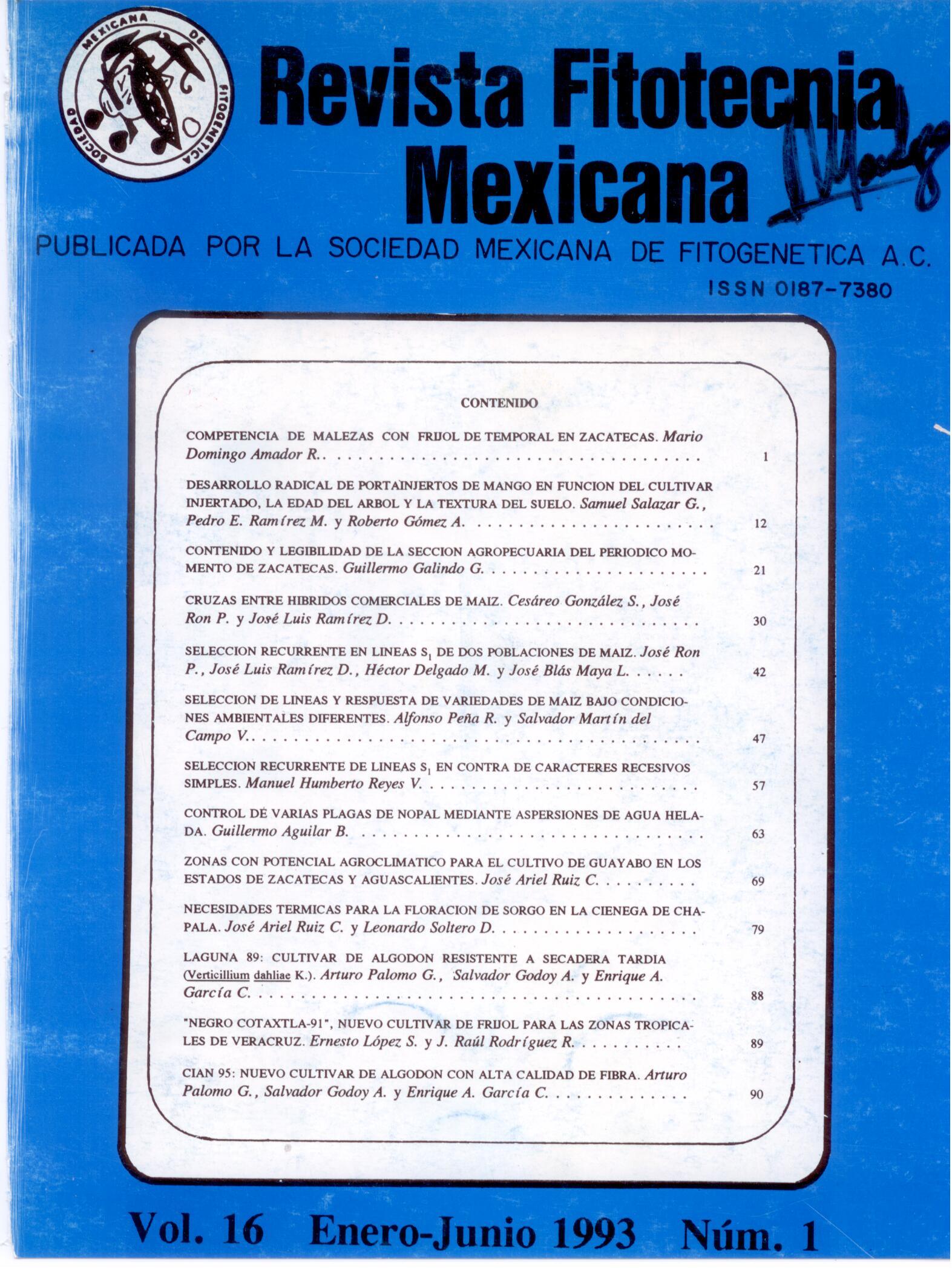RADICAL DEVELOPMENT OF MANGO ROOTS DEPENDING ON THE GRAFTED CULTIVAR, THE AGE OF THE TREE AND THE TEXTURE OF THE SOIL
Main Article Content
Abstract
The objective of this work was to measure, through excavation, the growth and characteristics of the roots in mango seedling rootstocks (Mangifera indica L.), grafted with the cultivars Haden and Tommy Atkins, which were 4, 6 and 8 years old, cultivated in soils of different texture: Sandy-clayloam (Las Varas, county of Compostela), clay loam (Huaristemba, county of San Blas), and clay
(Atonalisco, county of Tepic). From the results, the largest canopy vigor of the cultivar Haden was related with a greater longitudinal growth and thickness of its roots. As the mango tree grew it showed increments in number, thickness and length of roots, both in
horizontal and vertical directions. In the clay soils it was found a lesser number of roots, these being thicker but shorter than in the sandy-clay-loam soil. The root system was localized under the canopy projection area. The height of trees was a good indicator of the magnitude and vigor of the root system.

